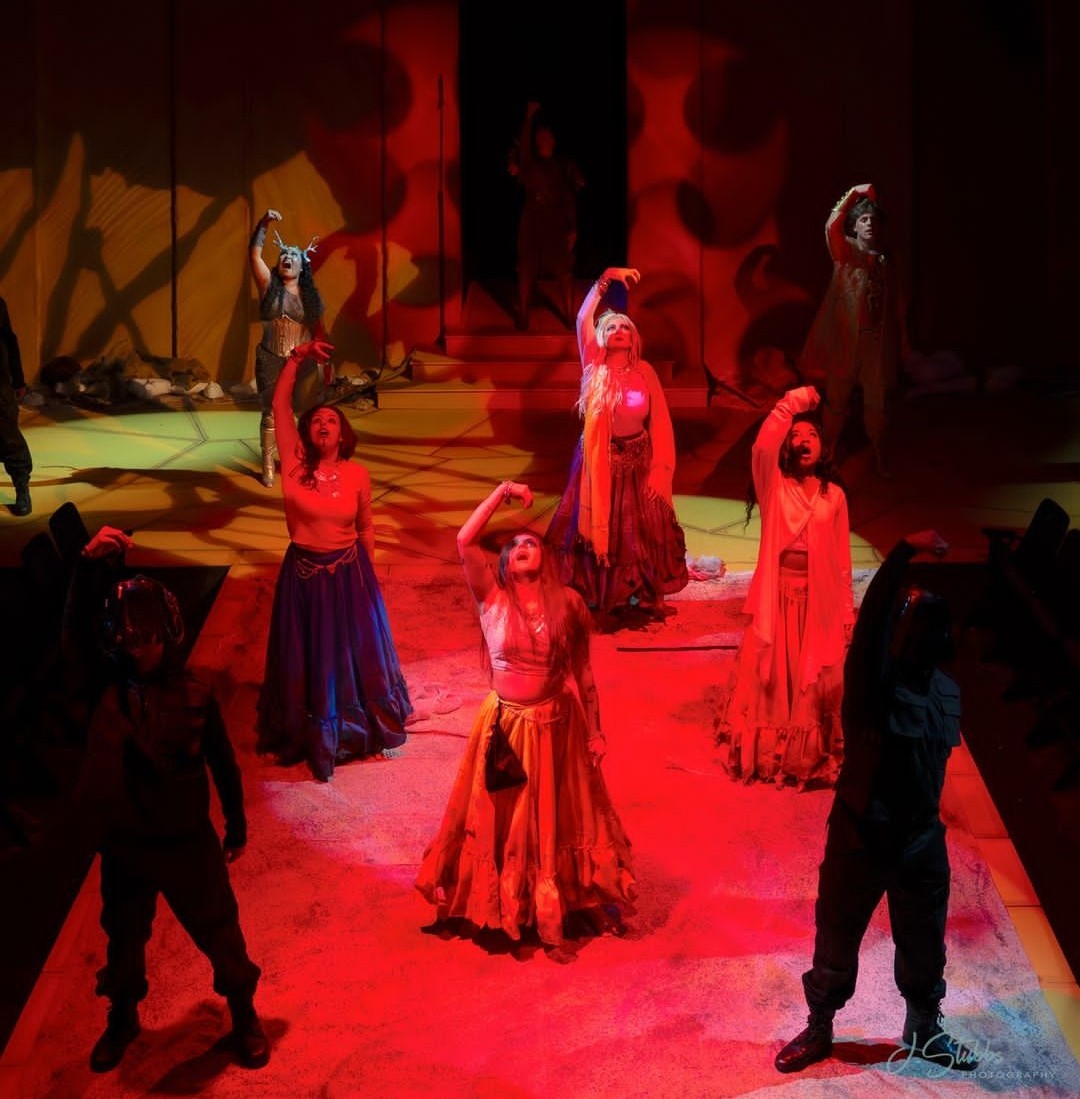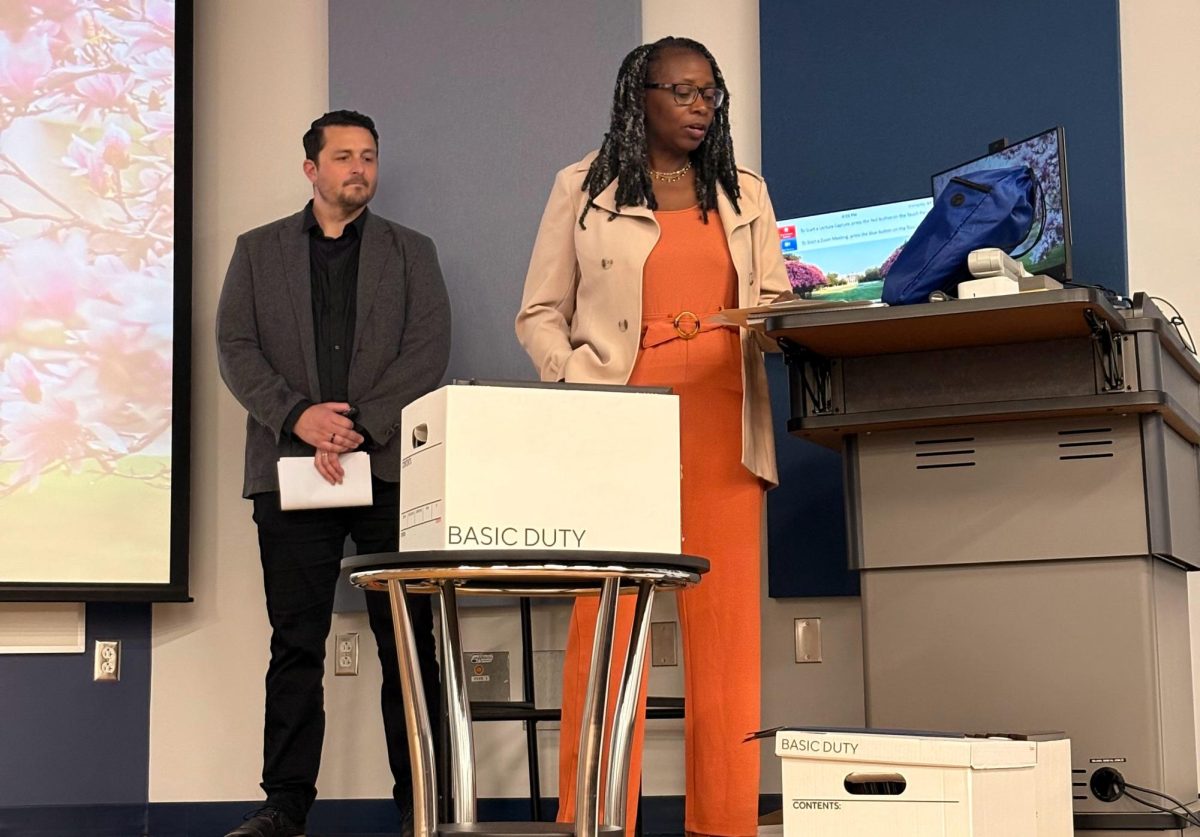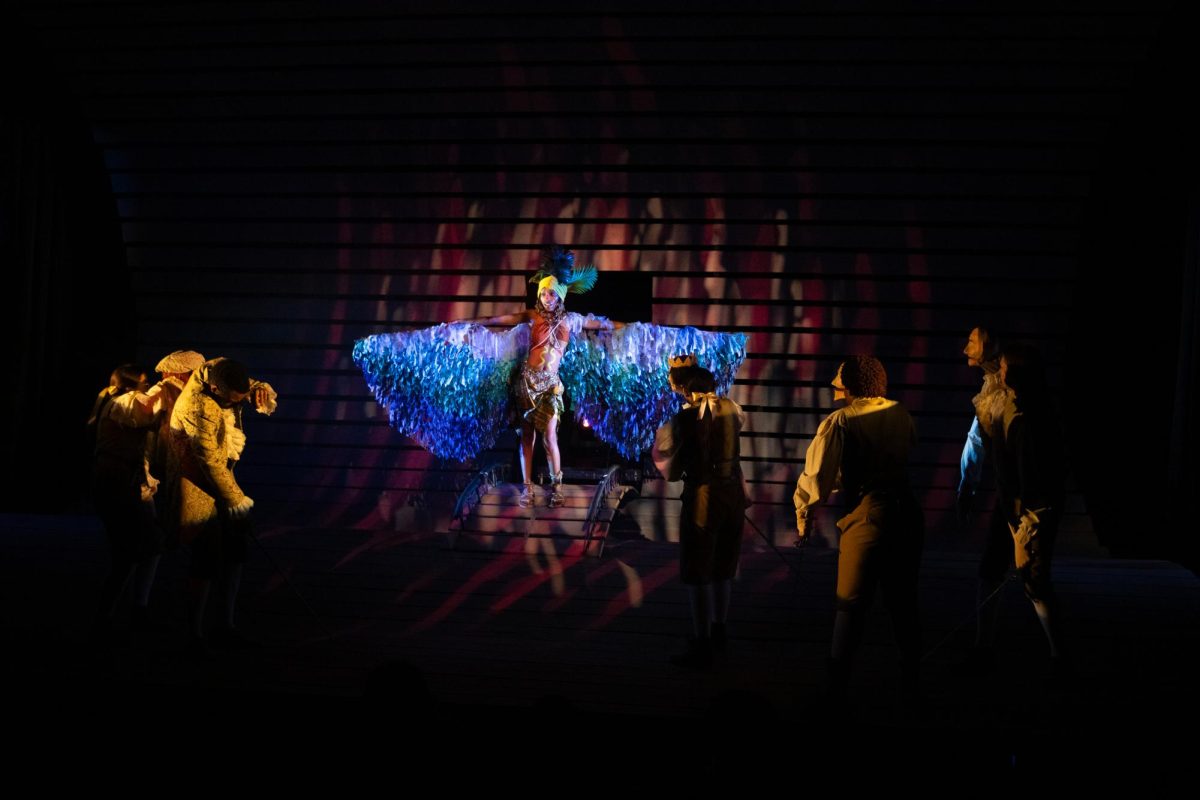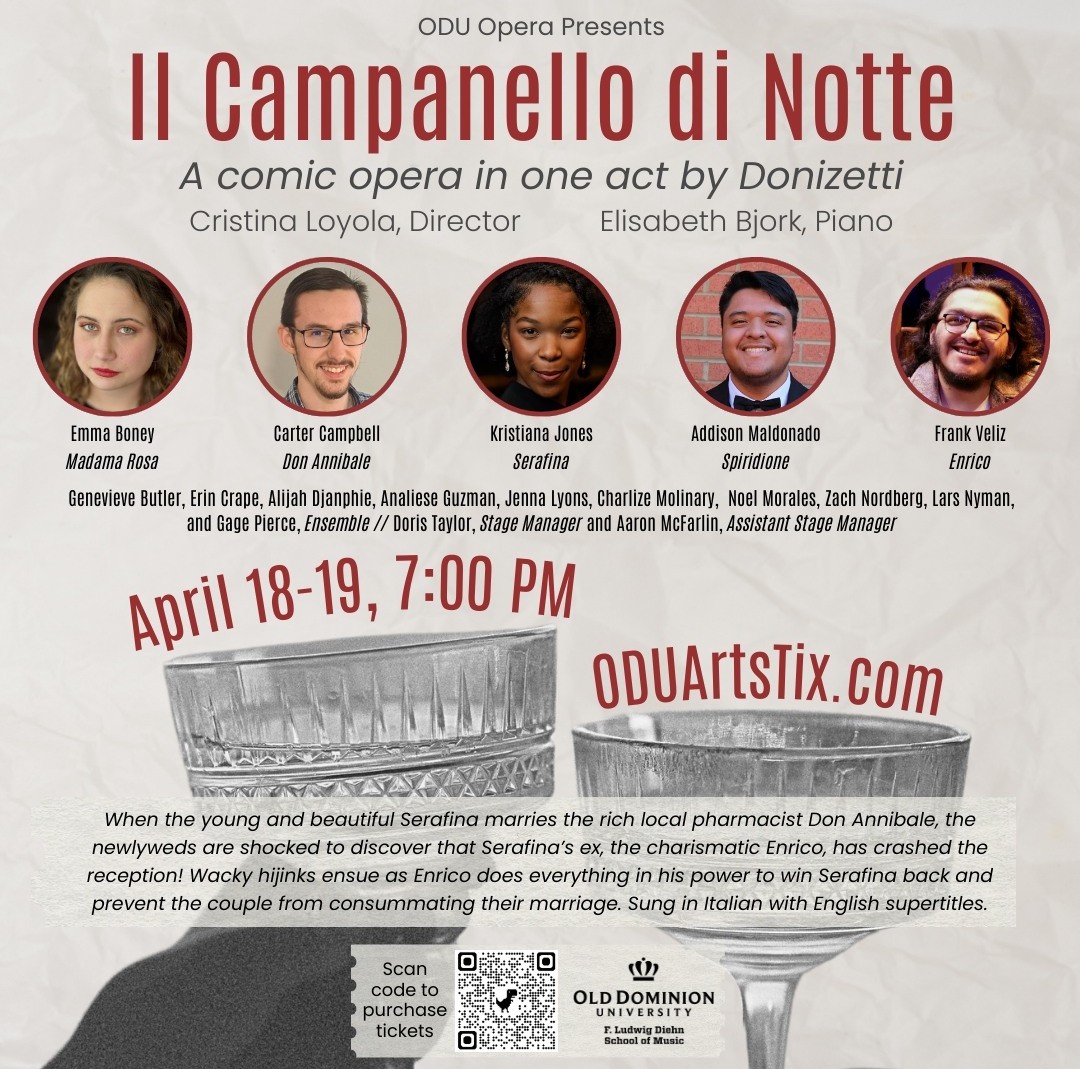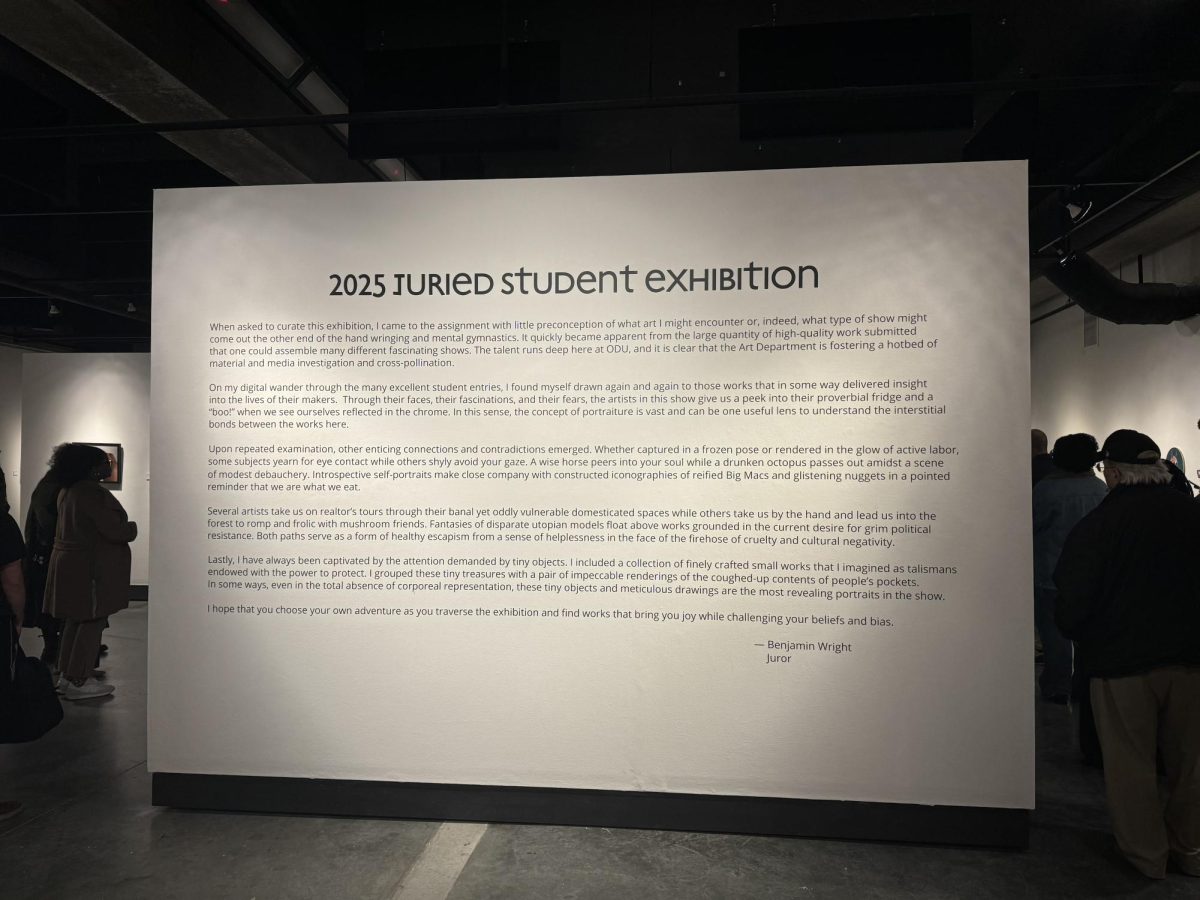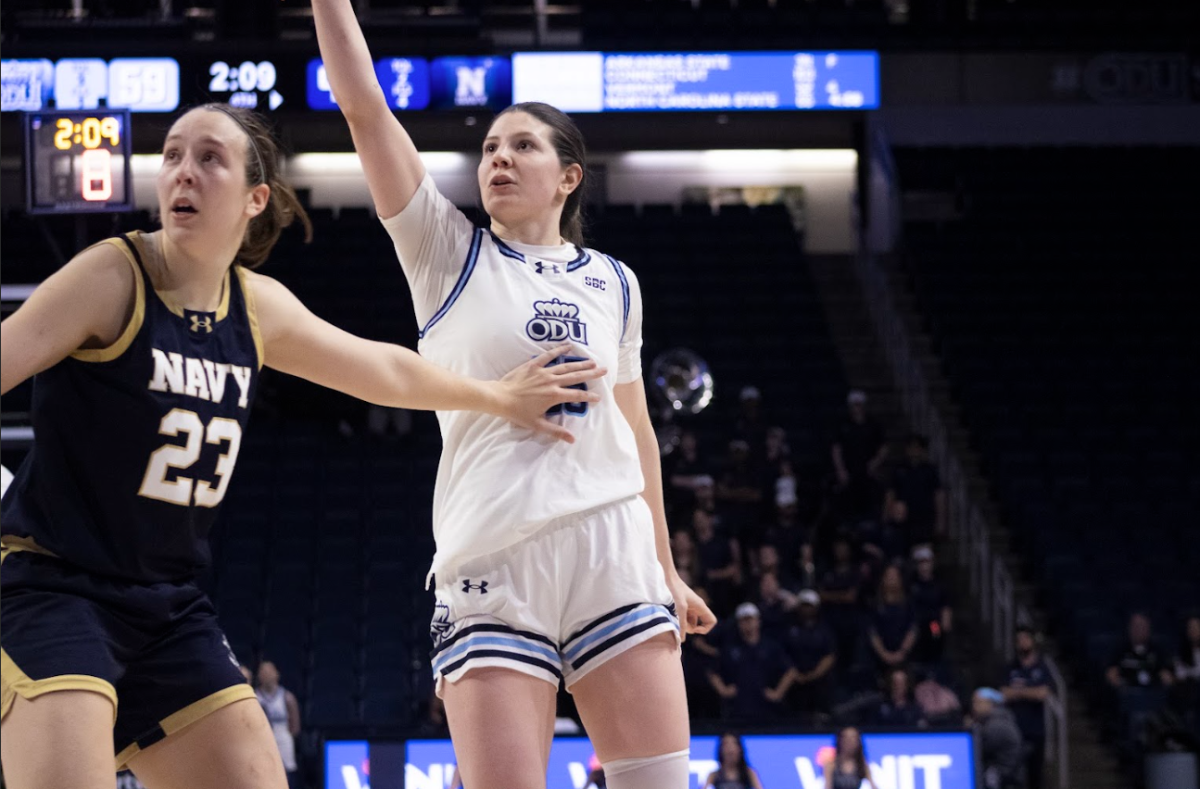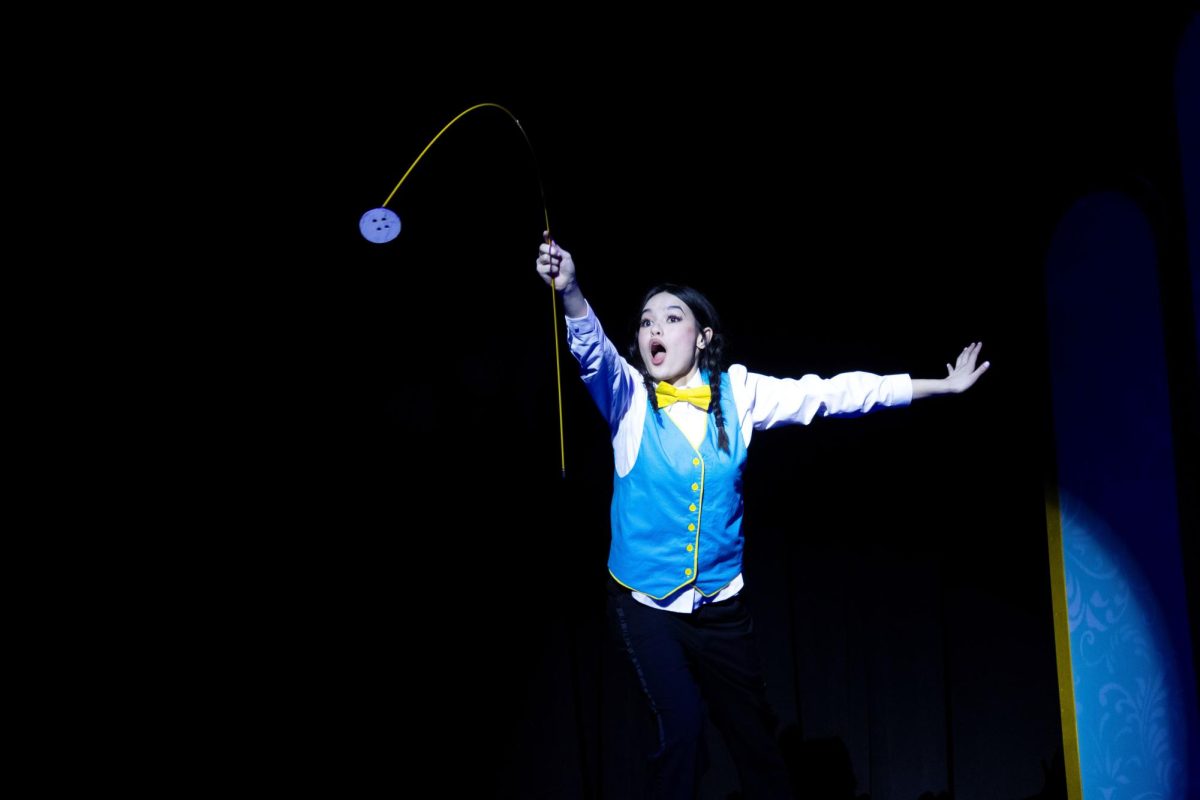“Another senseless war is won, a great city is reduced to ashes, and the women of defeated Troy must pay the reparations with their lives – through enslavement or death.”
Audiences seeing “Women of Troy” are thrust into the war-torn world of Troy immediately upon entering the space. Sounds of warplanes flying overhead fill the theater. A canvas of dust and ash covers the floor of the stage. Severe, visored soldiers are positioned in the audience, where a searchlight sweeps across the stage and a woman muttering to herself is positioned near where the end of the stage meets the start of the house.
“Women of Troy,” produced by ODURep, is written and directed by Deborah Wallace and serves as the conclusion of the story that began in Artemis, I. Ten years after the sacrifice of Iphigenia that enabled the Greeks to sail off to Troy, Wallace retells the plays “Trojan Women” by Euripides and “Agamemnon” by Aeschylus.
“The story of Trojan Women is essentially just the story of what remains after Troy has fallen, the fates of the queen of Troy and her daughters and her daughter-in-law, and the gods and how they continue to manipulate these situations,” said Wallace.
“This story is good. We’re getting to the root of everything. Every character has a story to bring and if you pay close attention, it all intertwines.” said Adrian Rivera, who plays Odysseus.
“Women of Troy” is a stunning and powerful play, but it is by no means a light-hearted play. It depicts war, violence, suicide, and sexual assault in its discussion of the consequences of the Trojan War.
“It’s tragic. It’s depressing. No good thing happens to anybody in the show,” said Reicse Owen, an ODU senior who plays Cassandra.
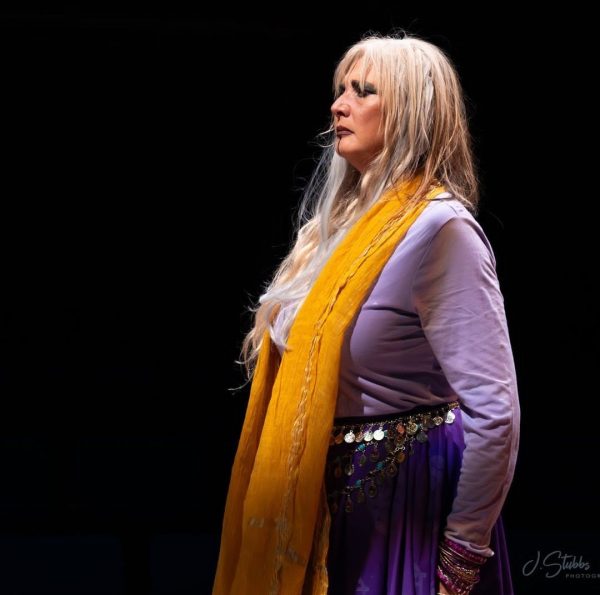
The first half of “Women of Troy” recounts the fates of Trojan women Cassandra, Hecuba, Andromache, and Helen after their capture by the Greek soldiers while detailing the godly squabbles of Artemis, Apollo, and Athena, each carrying a grudge against mortal actions. The second half tells of Clytemnestra’s revenge against Agamemnon for his sacrifice of their daughter, as well as the final fate of Cassandra, who had been claimed by Agamemnon as a concubine.
“Women of Troy” consists of many monologues and soliloquies delivered by talented actors of the ODU theatre department. Many cast members reprise their roles from the spring production of “Artemis, I,” including Anna Sosa, Joshua Moore, Leila Bryant, and Avi Raschdorf. Other cast members, such as Adrian Rivera, MK Martéy, Brooke Mullins, and Tahji McCombs previously played different roles in “Artemis, I,” or in McCombs’ case, served as assistant director. Veteran actors Jen Weir Edwards and Noëlle Peterson are the only new additions to the cast.

Reicse Owen steps into the lead role of Cassandra, the Trojan princess cursed by Apollo to receive visions of the future but never be believed. She jokes that she has been typecast as a “tortured seer” after previously playing the oracle Pythia in “Artemis, I.”
“It’s very challenging. It’s probably the hardest role that I’ve played so far,” she said. “I’ve never had a big role in a show before, so I was honored […] and it’s really nice. It’s my senior year! I got a lead role for my last show.”
Cassandra is on stage for the majority of the show, and Owen does a fantastic job bringing her to life, from her grand soliloquies in the spotlight to her bold defiance toward the characters that wish to control her and the little mannerisms she displays when in the background.
One particularly well-acted scene is an exchange between Leila Bryant’s Clytemnestra and Anna Sosa’s Artemis. Artemis has disguised herself as one of Clytemnestra’s subjects to help her kill Agamemnon, but their strong personalities cause them to clash over the details of the plan. There is an incredible sense of dramatic irony when Clytemnestra blasphemes and insults Artemis without knowing that the goddess is actually standing before her.
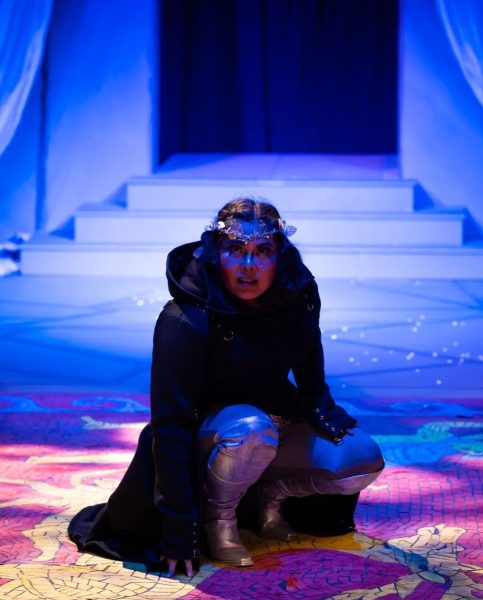
“I’m excited for folks to see just how committed students are to these performances,” Wallace said. “These are all enormous characters in mythology […] they’re just these big, larger than life, kind of entities. There’s really no way for them to [play them] without being inordinately committed.”
Much like its predecessor, “Women of Troy” stands out because of its bold visuals and unique use of sound. In addition to a beautifully detailed set, including a mosaic stylized after Ancient Greek art, the production employs creative uses of light to denote shifts in the story’s tone and mood.
“Deborah has a history of having some unique lighting situations, so we’re excited for the audience to see that,” said Rivera.
Music and dance also play a role in storytelling. Leila Bryant details how the group dance at the beginning encompasses the heavy aspects of the show, representing the capture of the Trojan women by the Greek soldiers. Several characters, such as Cassandra, Helen, and Clytemnestra, sing short but powerful musical interludes.
“I’m excited for everyone to see [this play] not just through the written word, but through dance and through song,” Bryant said.
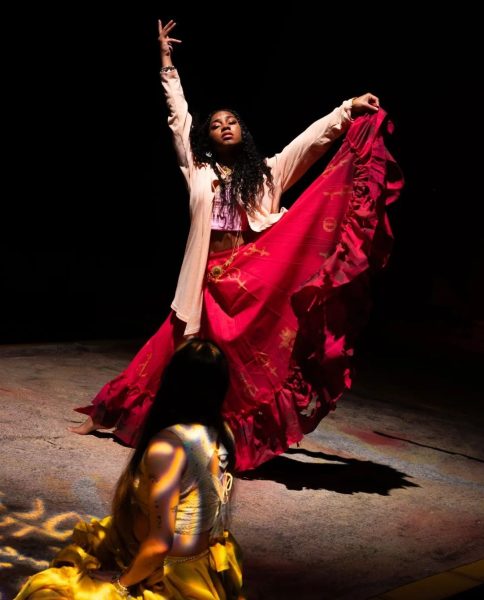
Perhaps the biggest strength of “Women of Troy” is Wallace’s retelling of this famous Greek story through a feminist lens, highlighting the perspectives of the Trojan women over those of the Greek soldiers. Wallace digs into the individual emotions that each woman feels, from Hecuba’s bold defiance in the face of her captors to Andromache’s incredible grief over the death of her family to Helen’s vicious takedown of her own status as the most beautiful woman in the world. Wallace brings Clytemnestra’s rage and grief over Iphigenia’s death to the forefront to explain her choice to kill Agamemnon, while highlighting how she successfully ruled Argos in his absence. The women of Troy outwit and prevail over the men they face.
“It really just shows you the resilience and the strength in all of these women. […] They all have to do horrible things in the show. […] At the end of the day, they’re doing it for themselves, to retain that one piece of independence and solidarity within themselves and each other,” said Owen.
“Women of Troy” is a story about the women of Greek mythology as well as an examination of how the meddling of gods comes at a high price to the mortals whose lives they play with. The world of the play is also filled with tons of nods to the source material, the Iliad, and Greek mythology that sharp-eyed viewers will be able to spot. Overall, the story exemplifies the spirit of Greek tragedies, ending on a heavy, bittersweet note.
“May your victory be as hollow as your horse.”


